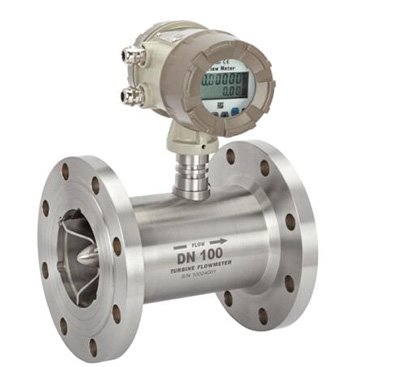The liquid turbine flowmeter is one of the key devices for accurately measuring liquid flow. It uses two main parts: the turbine head (also called the rotor) and the sensor. When the fluid passes through the turbine head, the turbine will rotate due to the thrust of the fluid.
The speed of rotation is proportional to the flow rate of the fluid. The sensor detects the rotation speed of the turbine and converts this signal into an electrical signal proportional to the flow rate, thereby realizing the measurement of the flow rate.
The liquid turbine flowmeter also has some limitations, such as certain requirements for the flow rate of the fluid, and cannot measure low flow rates and pulsating flows.
In addition, for fluids containing solid particles or fibers, the turbine is easily damaged, so it is not suitable for the measurement of these fluids.

Design Features
The turbine flow meter is available in three series: G (high), Z (medium), and D (low), with a maximum working pressure of 50 MPa. It is mainly used for high-pressure water measurement in oilfield water injection systems and is also suitable for flow detection in various high and low-pressure water machine systems.
It uses an all-hard alloy (tungsten carbide) shielded cantilever beam structure bearing, integrating rotating and pressure bearings, which significantly improves bearing life and allows operation in media with small amounts of silt and impurities.
The sensor is made of all stainless steel, providing excellent corrosion resistance. With samarium cobalt permanent magnet alloy as the signal detector, it outputs strong signals with good magnetic stability and can operate normally in media with temperatures ranging from 0 to 120°C.

Turbine flowmeter Structure
Turbine: Made of stainless steel material with a high magnetic conductivity coefficient. The impeller core is equipped with helical blades, which are rotated by the action of fluid on the blades.
Flow Straightener: Used to stabilize the flow direction of the fluid and support the impeller.
Magnetoelectric Converter: Composed of a coil and magnetic steel, it converts the rotational speed of the impeller into a corresponding electrical signal, which is then supplied to the preamplifier for amplification.
Housing: The entire flow meter is installed within the housing, which is made of non-magnetic stainless steel and connected to the fluid pipeline at both ends.
Preamplifier: Receives and amplifies the signal from the magnetoelectric converter.

Measurement Methods and Application Fields
Flow measurement is widely used in various fields, including industrial and agricultural production, national defense construction, scientific research, foreign trade, and everyday life.
In the power industry, the measurement and regulation of the flow of liquids, gases, and steam hold significant importance.
It is extensively used in industries such as petroleum, chemical, metallurgy, water supply, and paper manufacturing.
